A History of the County of Northampton: Volume 3. Originally published by Victoria County History, London, 1930.
This free content was digitised by double rekeying. All rights reserved.
'Parishes: Barton Seagrave', in A History of the County of Northampton: Volume 3, ed. William Page (London, 1930), British History Online https://prod.british-history.ac.uk/vch/northants/vol3/pp176-180 [accessed 31 January 2025].
'Parishes: Barton Seagrave', in A History of the County of Northampton: Volume 3. Edited by William Page (London, 1930), British History Online, accessed January 31, 2025, https://prod.british-history.ac.uk/vch/northants/vol3/pp176-180.
"Parishes: Barton Seagrave". A History of the County of Northampton: Volume 3. Ed. William Page (London, 1930), British History Online. Web. 31 January 2025. https://prod.british-history.ac.uk/vch/northants/vol3/pp176-180.
In this section
BARTON SEAGRAVE
Bertone xi cent.
The parish of Barton Seagrave contains 1,826 acres of land, and lies between 200 ft. and just over 300 ft. above the ordnance datum. The subsoil is Great and Inferior Oolite and Upper Lias. The river Ise forms part of the western boundary and another stream part of the eastern boundary. The village is on the Kettering and Thrapston road about two miles south-east of Kettering. The church lies on the south side of the road and south-west of it is the site of Barton Seagrave Castle built in the early part of the 14th century by Nicholas Segrave the younger, (fn. 1) and is apparently last mentioned in 1433, (fn. 2) after which it probably became a ruin. It was surrounded by a moat, and another moat lies to the north of the castle site. Barton Seagrave Hall, lately the property of Mr. George Edward Stringer, but now of the Wicksteed Village Trust, is on the north side of the road. It appears to have been rebuilt in the first half of the 18th century, the date 1725 being on the lead rain-water heads. The house is of two stories, constructed throughout of limestone and roofed with Collyweston slates. The main front faces south and has projecting end-wings with plain gables and a middle gabled porch of two stories with classic doorway. A wing at the east end containing a number of small rooms appears to be older than the rest of the building. (fn. 3)
The Kettering and Huntingdon branch of the London Midland and Scottish Railway crosses the parish, the nearest station being at Kettering.
Manors
The manor of BARTON, which was afterwards divided into the manors of BARTON HANRED and BARTON SEAGRAVE, was held in the time of Edward the Confessor by Burred. (fn. 4) He and his parents are said to have granted it to the Abbey of Peterborough, (fn. 5) but it was not amongst the abbey lands in the Domesday Book (1086), but appears under those of Geoffrey Bishop of Coutances, to whom it and other lands of Burred and his son Eadwine were granted. (fn. 6) It was assessed at 4½ hides in 1086, (fn. 7) and passed to Robert de Mowbray, who forfeited it to William Rufus. Rufus probably gave them to Robert FitzHamon, whose daughter married Robert first Earl of Gloucester. (fn. 8) They thus passed to the Gloucester Fee in Northamptonshire. (fn. 9) In 1086 the sub-tenant of the manor was named Robert, (fn. 10) but early in the 12th century he had been succeeded by Geoffrey the chamberlain, probably Geoffrey de Clinton, who held 5 hides of land in Barton. (fn. 11) In 1284, the immediate mesne tenant of the Earl of Gloucester was Joan Chambernon, (fn. 12) who was living in 1314, (fn. 13) but her successors are not named, nor does it appear what right she had in the manor.
In the second half of the 12th century Barton was held in mesne lordship by Richard de Hanred, (fn. 14) who gave his name to the manor of BARTON HANRED. His son William succeeded as a minor, but was of age in 1201, (fn. 15) and he held the manor partly as a mesne lord but had also 2½ virgates of land in demesne. (fn. 16) He died before 1209 (fn. 17) and was succeeded by his son Richard; (fn. 18) the latter's heir was holding Barton in 1243; (fn. 19) he was probably another Richard de Hanred, who was living in 1266. (fn. 20) His successor, William Hanred, (fn. 21) was hanged for felony in 1295, and his possessions escheated to the king for a year and a day, and the mesne lordship disappeared. (fn. 22)
The first tenant of the manor in demesne whose name is recorded was William Clifford, who was hanged for felony in the latter part of the 12th century. (fn. 23) It escheated to his lord, Richard de Hanred, and while William de Hanred was a minor his guardian granted it to Thomas de Buketon, who married Agatha sister of William Clifford. (fn. 24) It passed to her son John de Buketon before 1201, when William de Hanred tried to recover it. (fn. 25) An agreement was made by which John held the manor of William, who, however, reserved 2½ virgates of land in demesne. (fn. 26) In 1218 another agreement was made between Simon de Hal and Arnold de Buketon, the heirs of John de Buketon and Richard de Hanred. (fn. 27) Before 1278 it had passed to William de Lisle. (fn. 28) In 1284 the tenant was Roger de Lisle, (fn. 29) who obtained certain land which William de Hanred held when it escheated to the king in 1295. (fn. 30) John de Lisle made a settlement of the manor in 1334 on himself for life with remainder to his grandson John, son of his daughter Amice and her husband Simon de Lanshull, (fn. 31) but before 1368 it had passed to Richard Cloun, (fn. 32) who was still the tenant in 1402. (fn. 33) It passed before 1446 to Henry Garstang, (fn. 34) probably in right of his wife Elizabeth, who afterwards married Peter Humphrey, (fn. 35) probably a member of a family long settled at Barton. (fn. 36) The Humphreys held Barton Hanred manor till the middle of the 17th century. They also obtained Barton Segrave manor (q.v.), and from this time no distinction seems to have been made between the two manors, which were later known as the manor of Barton Seagrave or Hanred. Elizabeth's son John (fn. 37) was succeeded in direct succession by William, (fn. 38) Richard, (fn. 39) William, (fn. 40) Richard, (fn. 41) and Nathaniel Humphrey. (fn. 42) Nathaniel left two daughters, Anne, the wife of Edward Tudor, and Elizabeth, the wife of Thomas Brudenell. (fn. 43) The manor apparently got into the hands of trustees or mortgagees at this time. (fn. 44) Sir John Robinson, Lord Mayor of London, and Anne his wife were dealing with it in 1659, (fn. 45) and others a little later. (fn. 46) John Bridges states that his father John Bridges bought the manor about 1665 from Mr. Humphrey, Brien Cockayne (Lord Cullen), Lord Mayor of London, and others, (fn. 47) and the historian of Northamptonshire was born there in 1666. (fn. 48) John Bridges died in 1725. He had been successively appointed Solicitor of the Customs in 1695, Commissioner of the Customs in 1711, and Cashier of Excise in 1715. (fn. 49) He was a Fellow of the Royal Society (fn. 50) and had devoted both his time and money to collecting material for a history of Northamptonshire. His collections were left to his brother William, but owing to various misfortunes they were not published till 1791, and then appeared in a form which does not do justice to the great amount of research and mass of accurate information which he had collected. The manors of Barton seem to have been sold and came into the possession of Richard Tibbits before 1793. (fn. 51) He was succeeded by Richard John Tibbits, whose daughter and heir, Mary Isabella, in 1837 married Samuel, third Viscount Hood. She died in 1904 and was succeeded by her son Francis, fourth Viscount Hood, who died in 1907 and was succeeded by his son Grosvenor Arthur Alexander, fifth Viscount Hood, the present owner. (fn. 52)
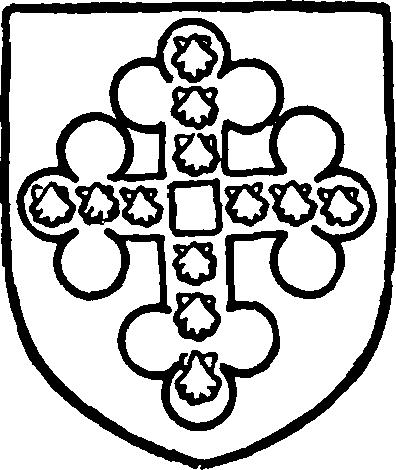
Humphrey of Barton. Gules a crosslet quarter pierced argent with three scallops sable upon each arm.
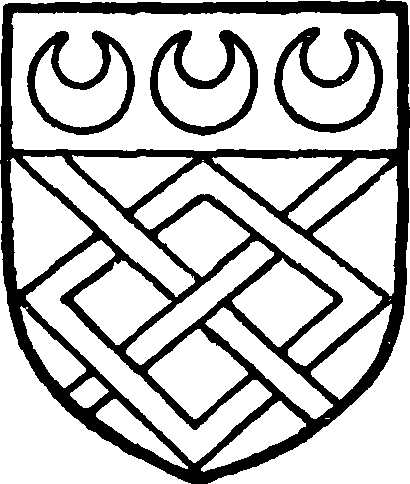
Hood. Azure a fret argent and a chief or charged with three crescents sable.
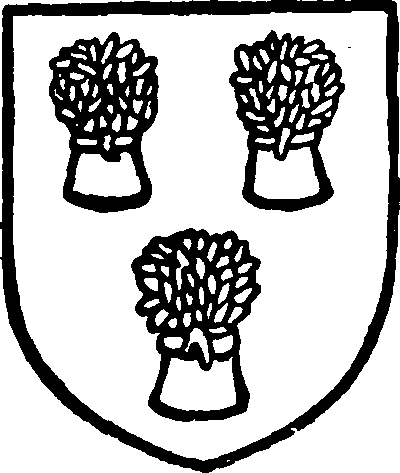
Segrave. Sable three sheaves argent banded gules.
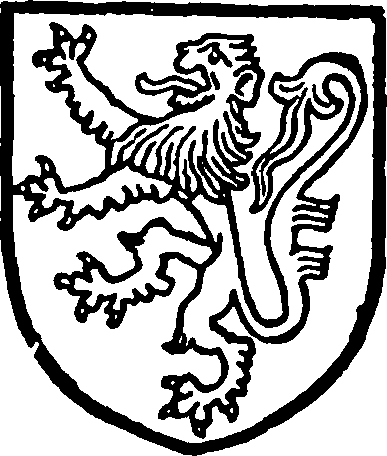
Mowbray. Gules a lion argent.
At some period in the 13th century part of Barton was granted to Nicholas de Segrave the elder, (fn. 53) possibly when the manor was in the king's hands after William de Hanred's felony. (fn. 54) It was known as the castle and manor of Barton Segrave, and contained some 12 virgates of land, as well as meadow, pasture, and 20 acres of wood, besides rents. (fn. 55) Nicholas granted it to his younger son Nicholas de Segrave, who died seised in 1322, when it passed to his daughter and heir Maud, the wife of Edmund de Bohun. (fn. 56) It afterwards reverted to the elder branch of the Segraves (fn. 57) from whom it passed to the Mowbrays (fn. 58) and was in the possession of John, Duke of Norfolk, in 1469. (fn. 59) Before 1331, a manor had been granted to Simon de Drayton and his wife Margaret, (fn. 60) but in 1336 they and their son John and his wife Christina quitclaimed it to John, (fn. 61) son of Stephen de Segrave, and in 1344 John de Segrave was apparently holding the manor in demesne. (fn. 62) In 1493 Henry Vere who succeeded through the Greens to the Drayton property (fn. 63) died seised of property in Barton, (fn. 64) which seems to have been sold, before his daughters and co-heirs came of age. In 1557 Richard Humphrey, the lord of Barton Hanred manor (q.v.), died seised of the manor of Barton Seagrave (fn. 65) and from this time the manors were held together.
The Earls of Gloucester held a court-leet and view of frankpledge for their tenants of Barton, the court being held within the manor of Barton Seagrave. They also had the rights of assizes of bread and ale, pillory, tumbril, infangenthief and outfangenthief, chattels of felons and fugitives, waif and strays and the return and execution of writs, summons and orders of the king. (fn. 66)
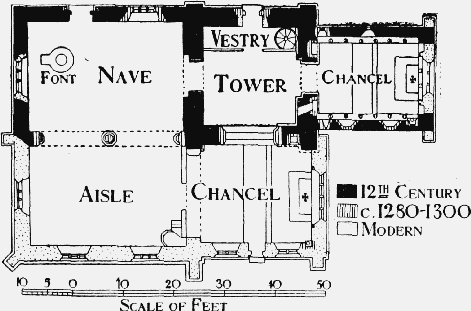
Plan of Barton Seagrave Church
The prior of the Hospital of St. John of Jerusalem in England held a view of frankpledge for his tenants of Barton Hanred, at Glapthorn. (fn. 67)
Two mills are mentioned in 1086, paying 10s. a year. (fn. 68) One mill appears to have been granted to the Abbey of Sulby before 1227, but in that year Abbot Walter granted it to Simon de Hal in exchange for half a virgate of land. (fn. 69) Another mill was held in 1285 of William de Hanred, (fn. 70) by William, son of William Cranford.
The priory of St. John of Jerusalem held lands in Barton, some of which probably had been held by the Knights Templars, (fn. 71) but a messuage and virgate of land were granted them in 1292 by William de Barton, chaplain. (fn. 72) In 1546, the lands of the Hospitallers were granted to Giles and George Isham, and were occupied by Richard Humphrey. (fn. 73)
The Abbey of Sulby also held lands in Barton, which after the Dissolution of the Monasteries were granted with the advowson (q.v.) to Edward Humphreys. (fn. 74)
Church
The church of ST. BOTOLPH is a building of considerable interest consisting of chancel and nave with massive axial tower built in the early part of the 12th century, to which about 1270 a south aisle was added with a chapel at its east end, covering the tower. Other work done before the close of the 13th century and later did not affect the plan, which remained unaltered until 1878, when the south aisle and chapel were pulled down and rebuilt on a larger scale, forming a new nave and chancel. A modern north porch was at the same time removed and the church completely restored. (fn. 75)
The original building is of rubble and some herringbone work remains. The heightened nave has a plain parapet with low-pitched leaded roof, but the chancel is covered with red tiles. The new work is faced with ashlar and is under a separate tiled roof. Internally, all the walls are plastered.
The north and west walls of the nave, the bulk of the tower, and in the main the walls of the chancel are original 12th-century work, though the chancel has been much altered: a clearstory was added to the nave c. 1300 and the tower was heightened in the middle of the 14th century.
The chancel measures internally 19 ft. 9 in. by 14 ft. 6 in. and has a modern three-light east window. On the north side it retains a 12th century round-headed window high in the wall, with moulded outer arch on shafts with volute capitals, and in the south wall are two 13th-century lancets. Later in the century a wall arcade was carried round the chancel inside, below the windows, and this remains along the north and south walls. It consists of seven trefoiled arches on each side, with moulded bases and capitals alternately moulded and carved with upturned foliage. The arcading, long hidden, was uncovered and restored in 1878 and that on the east wall reconstructed. There is also a return arch on each side at the west end on either side of the tower opening, that on the south being pierced to form a squint. The trefoiled piscina, set within the arcading, has a modern drain, and at the west end of either wall are two rectangular lowside openings with outer trefoiled heads. (fn. 76) The remains of a panelled table tomb, with shields retaining traces of colour, are built into the north wall below the arcading.
The tower is the full width of the nave and has flat angle buttresses north and south: it measures internally 18 ft. 8 in. by 19 ft. 6 in., the greater dimension being from north to south, and the walls are 3 ft. 10 in. thick. The lower stage is open to the chancel and nave by semi-circular arches of two orders facing west, (fn. 77) the inner square and the outer with big edge rolls, billet hood moulds, and jamb shafts with sculptured capitals. In the chancel arch the capital of the south shaft is carved with birds and that on the north with a volute and acanthus. Both shafts of the western arch have volutes and foliage of a more advanced type and a cable soffit to the impost. In the north wall is an inserted pointed doorway and above it a late 13th-century window of two lights with forked mullion and modern cusping. Above this again is an original recessed semi-circular window with moulded arch and jamb shafts similar to that in the chancel, but with star ornament on the imposts: a corresponding window on the south side of the tower is unmoulded. The later bell-chamber windows are of two trefoiled lights with a quatrefoil in the head, and the tower terminates in a restored 15th-century battlemented parapet with angle pinnacles. The height to the top of the parapet is 55 ft.
The nave measures internally 31 ft. 6 in. by 21 ft. 6 in. In the north and south walls, at a considerable height above the floor, are the remains of two blocked round-headed windows, that on the south side in the spandrel above the pier of the arcade, the arches of which were cut through the old wall. The north doorway has a semicircular arch with roll and hollow moulding and a hood with cable and sunk star decoration, on angle shafts with high moulded bases and carved capitals. The tympanum has already been described. (fn. 78) The capitals have grotesque heads with volutes at the join, and that on the east a cable moulding. The panelled oak door is probably of the 16th century and retains a ring handle. East of the doorway is a late 13th-century window of three lights with intersecting tracery and modern cusping, but the west window dates only from about 1845. (fn. 79) The clearstory windows, four on each side, are small trefoiled openings set within curved triangular labels, similar in type to those at Cranford, and possibly as late as c. 1310–20.
The late 13th-century nave arcade is of two bays with pointed arches of two chamfered orders springing from an octagonal pier and responds with moulded capitals and bases. The single arch cut through the south wall of the tower to the former chapel is of the same period and type, the inner order carried on moulded corbels supported by heads. There are remains of a rood-loft stair in the tower wall at the north-east corner of the chapel, (fn. 80) and a late 13thcentury trefoiled piscina has been re-used in the south wall of the new south chancel. All the roofs are modern.
The late 12th-century font has a plain circular bowl and flat 17th-century cover.
The pulpit is modern, but some 16th-century linen pattern panelling has been worked up in a prayer desk. There is also some good late 16th or early 17th century oak panelling in the screen forming a vestry on the north side of the tower: from the vestry a circular wooden staircase gives access to the ringing chamber.
In the chancel is a brass tablet to Jane Floyde (d. 1616), wife of Hugh Floyde, rector, who is depicted at a prayer desk attended by five children: below the tower is a blue slab with indents of four corner shields and an inscription, but re-used in 1686 for William Henchman, rector. (fn. 81) The east end of the former aisle was the burial place of the Bridges family: the marble wall monument to John Bridges (d. 1712) and Elizabeth his wife, is now at the west end of the aisle, and in the old nave is a monument to his grandson John, son of William Bridges, who died in 1741: both have long Latin inscriptions. There is no monument to the historian of the county, (fn. 82) but in the floor of the new nave, near the pulpit, is a slab inscribed 'Johannes Bridges Armiger, obiit 16 Marti An. Dom. 1723/4, aetatis suae 57.'
There are five bells, the treble by Taylor and Co., of Loughborough 1903, the second by Thomas Newcombe of Leicester (c. 1562–80) with an imperfect inscription, and the others of pre-Reformation date inscribed respectively 'S. Jacobe,' 'Sti Petre o.p.n.,' and 'S. Johanne.' (fn. 83) A clock was presented in 1891 by Viscountess Hood.
The plate consists of a cup, paten and almsdish of 1832, each inscribed 'Barton Seagrave 1833,' a flagon of 1868, and a silver christening bowl of 1763 with the arms of the see of Rochester, inscribed 'In nomine Patris et Filii et Spiritus Sancti Amen. Ecclesia de Barton Segrave in agro Northantoniensi.' (fn. 84)
The registers before 1812 are as follows: (i) baptisms 1609–1810, marriages 1609–1750, burials 1610–1685, (ii) burials 1678–1812, (iii) marriages 1754–1809, (iv) marriages 1811–12. There are churchwardens' accounts 1743–1836, and overseers' and constables' accounts 1728–1797.
Advowson
The advowson of the church of Barton Seagrave was granted by Geoffrey de Clinton to the Priory of Kenilworth, which he founded about 1122. (fn. 85) In the early 13th century Richard de Hanred unsuccessfully claimed the advowson. (fn. 86) The priory held the advowson at the Dissolution and a yearly pension of £2 was paid to it from the rectory. (fn. 87)
In 1543, the advowson and pension were granted to Edward Humphrey, a younger son of Richard Humphrey, the lord of the manors of Barton Seagrave and Hanred (q.v.) (fn. 88) William Humphrey, his brother, held them on a lease at the time of Edward's death and they seem to have passed into his ownership, as John Humphrey, an elder brother, predeceased their father. (fn. 89) Before 1629, however, they seem to have been alienated, since Sir John Lambe presented in that year (fn. 90) and Robert Ekins in 1631. (fn. 91) Jane Ekins presented in 1686 (fn. 92) and Jeffery Barton and John Sawyer in 1703. (fn. 93) The advowson was acquired before 1773 by the Duke and Duchess of Montagu (fn. 94) and the Duke of Buccleuch is patron of the living at the present day.
Charities.
By his will dated in 1760 John Ekins gave £50 for the poor. In respect of this charity a sum of £1 10s. is yearly paid out of land now belonging to the Islip Iron Co. near Thrapston and is distributed by the churchwardens equally among six poor widows.
